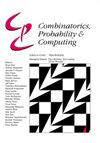FRET Study Between Carbon Quantum Dots and Malachite Green by Steady-State and Time-Resolved Fluorescence Spectroscopy
IF 0.8
4区 数学
Q3 COMPUTER SCIENCE, THEORY & METHODS
引用次数: 1
Abstract
Understanding the interaction between different organic dyes and carbon quantum dots helps us to understand several photo physical processes like electron transfer, energy transfer, molecular sensing, drug delivery and dye degradation processes etc. The primary objective of this study is to whether the carbon quantum dots can act as an electron donor and can participate in the different photo physical processes. In this work, Carbon Quantum Dots (CQDLs) are synthesized in most economical and simple carbonization method where petals of Nelumbo nucifera L. are used as a carbon precursor. The synthesized CQDLs were characterized by using experimental techniques like UV−Vis absorption, FT-IR, Transmission Electron Microscopy (TEM), steadystate and time-resolved fluorescence spectroscopy. The spectral analysis shows that the so synthesized CQDLs are spherical in shape and its diameter is around 4.2 nm. It shows the fluorescence emission maximum at 495 nm with a quantum yield of 4%. In this work the interaction between Carbon Quantum Dots (CQDLs) and an organic dye Malachite Green (MG) is studied using fluorescence spectroscopic technique under ambient pH condition (At pH 7). The quenching mechanism of CQDLs with MG was investigated using Stern-Volmer equation and time-resolved fluorescence lifetime studies. The results show that the dominant process of fluorescence quenching is attributed to Forster Resonance Energy Transfer (FRET) having a donor acceptor distance of 53 Å where CQDLs act as a donor and MG acts as an acceptor. This work has a consequence that CQDLs can be used as a donor species for different photo physical processes such as photovoltaic cell, dye sensitized solar cell, and also for antioxidant activity study.碳量子点与孔雀绿的FRET稳态和时间分辨荧光光谱研究
了解不同有机染料和碳量子点之间的相互作用有助于我们理解几个光物理过程,如电子转移、能量转移、分子传感、药物递送和染料降解过程等。本研究的主要目的是研究碳量子点是否可以作为电子供体参与不同的光物理过程。本工作采用最经济、最简单的碳化方法合成了碳量子点(CQDL),其中以莲藕花瓣为前体。采用紫外-可见光谱、红外光谱、透射电子显微镜、稳态和时间分辨荧光光谱等实验技术对合成的CQDL进行了表征。光谱分析表明,合成的CQDL呈球形,其直径约为4.2nm。其荧光发射最大值为495nm,量子产率为4%。本文利用荧光光谱技术研究了碳量子点(CQDL)与有机染料孔雀绿(MG)在环境pH条件下(pH7)的相互作用。利用Stern-Volmer方程和时间分辨荧光寿命研究了MG对CQDL的猝灭机制。结果表明,荧光猝灭的主要过程归因于Forster共振能量转移(FRET),其供体-受体距离为53Å,其中CQDL充当供体,MG充当受体。这项工作的结果是,CQDL可以作为不同光物理过程的供体物种,如光伏电池、染料敏化太阳能电池,以及抗氧化活性研究。
本文章由计算机程序翻译,如有差异,请以英文原文为准。
求助全文
约1分钟内获得全文
求助全文
来源期刊

Combinatorics, Probability & Computing
数学-计算机:理论方法
CiteScore
2.40
自引率
11.10%
发文量
33
审稿时长
6-12 weeks
期刊介绍:
Published bimonthly, Combinatorics, Probability & Computing is devoted to the three areas of combinatorics, probability theory and theoretical computer science. Topics covered include classical and algebraic graph theory, extremal set theory, matroid theory, probabilistic methods and random combinatorial structures; combinatorial probability and limit theorems for random combinatorial structures; the theory of algorithms (including complexity theory), randomised algorithms, probabilistic analysis of algorithms, computational learning theory and optimisation.
 求助内容:
求助内容: 应助结果提醒方式:
应助结果提醒方式:


